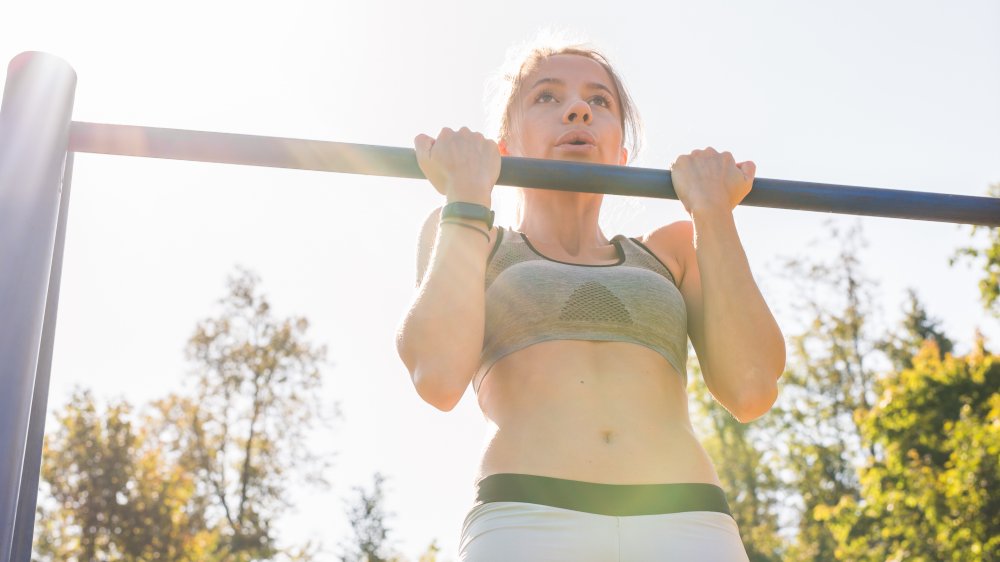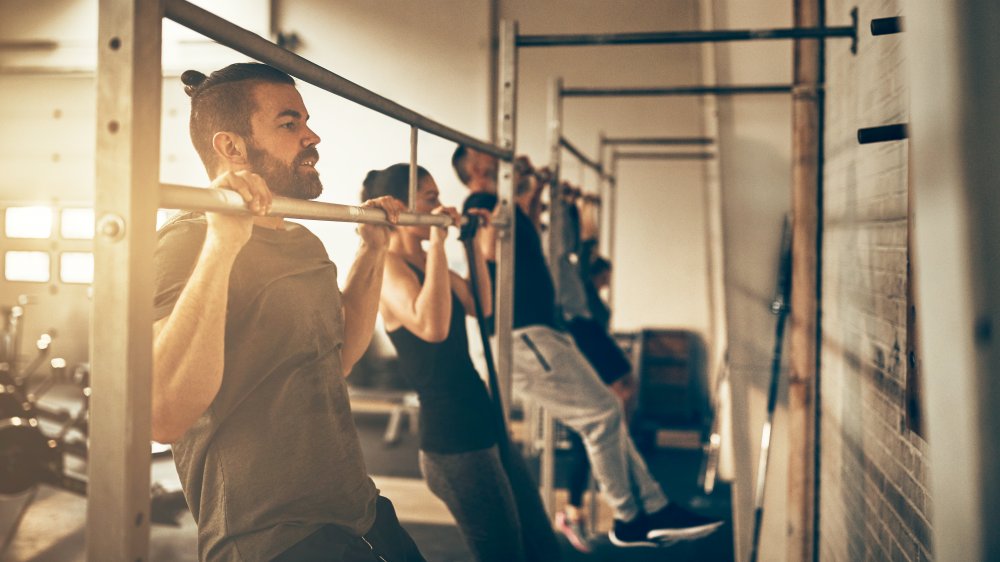The Real Difference Between Chin-Ups And Pull-Ups
When training your upper body, you might want to work chin-ups or pull-ups into your routine. But if you're thinking, "Aren't those the same exercise?" you're not alone. Although people use these terms interchangeably, chin-ups and pull-ups target different muscle groups: One engages your upper back and arm muscles while the other activates your back, chest, and shoulder muscles (via Insider).
The way you grip the bar changes the focus of the exercise, says Andy Sobuta, a licensed physical therapist at Spaulding Outpatient Center in Malden, Massachusetts, an official teaching partner of the Harvard Medical School Department of Physical Medicine and Rehabilitation.
Because both exercises require upper-body strength, it's hard to believe that just changing your grip could make such a huge difference. But if you try one of each, even using playground equipment, you'll feel the difference.
To perform a chin-up, grab a bar with both hands shoulder-width apart, the palms facing toward you, Sobuta told Insider. Pull yourself up until your chin is above the bar; pause, then lower yourself all the way back down.
Turning your palms toward you is a more natural position that reduces the risk of injuring your shoulders, Sobuta said. This posture also engages your forearms, biceps, shoulders, and the latissimus dorsi, or "lats," across your upper back.
Pull-ups may help athletes' shoulder health
With a pull-up, you also grab a bar with your arms shoulder-width apart, only now your palms face away from you. You're again pulling yourself up until your chin is above the bar, then pausing and lowering to the ground — but you should notice different muscles at work.
Pull-ups also target the lats, along with your chest and shoulder muscles. But because of the change in posture, this exercise also works the lower trapezius muscles between your shoulder blades, Sobuta said.
Overall, both exercises are great for strengthening your upper body and your core. Athletes who perform frequent overhead movements, such as pitchers and volleyball players, may find that training the back muscles involved in pull-ups improves their shoulder health, Sobuta said.
With either exercise, it's also important to extend yourself low enough and lift yourself high enough to get the full range of motion and training benefits, according to Steve Kamb, founder of the online workout and training program Nerd Fitness, launched in 2009. Pull-ups especially can strain the shoulders if you're not in proper position before you lift. Kamb suggests imagining pinching a pen between your shoulder blades to pull your shoulders down and back before you lift (via Nerd Fitness).


